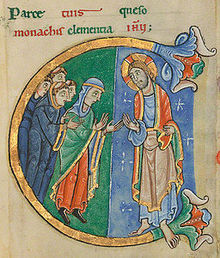
Saint Albans is a cathedral city in Hertfordshire, England, east of Hemel Hempstead and west of Hatfield, 20 miles (32 km) north-west of London, 8 miles (13 km) south-west of Welwyn Garden City and 11 miles (18 km) south-east of Luton. St Albans was the first major town on the old Roman road of Watling Street for travellers heading north and became the city of Verulamium. It is within the London commuter belt and the Greater London Built-up Area.
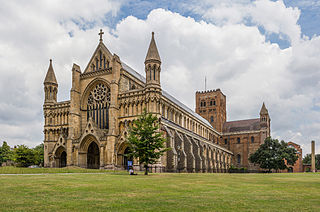
St Albans Cathedral, officially the Cathedral and Abbey Church of St Alban but often referred to locally as "the Abbey", is a Church of England cathedral in St Albans, England. Much of its architecture dates from Norman times. It ceased to be an abbey following its dissolution in the 16th century and became a cathedral in 1877. Although legally a cathedral church, it differs in certain particulars from most other cathedrals in England, being also used as a parish church, of which the dean is rector with the same powers, responsibilities and duties as that of any other parish. At 85 metres long, it has the longest nave of any cathedral in England.

Wymondham Abbey is the Anglican parish church for the town of Wymondham in Norfolk, England.

Ramsey Abbey was a Benedictine abbey in Ramsey, Huntingdonshire, England. It was founded about AD 969 and dissolved in 1539.

Neot was an English monk. Born in the first half of the ninth century, he lived as a monk at Glastonbury Abbey. He preferred to perform his religious devotions privately, and he later went to live an isolated life in Cornwall, near the village now called St Neot. His wisdom and religious dedication earned him admiration from the monks. He visited the Pope in Rome, who instructed him to found a monastery in Cornwall.

Amphibalus is a venerated early Christian priest said to have converted Saint Alban to Christianity. He occupied a place in British hagiography almost as revered as Alban himself. According to many hagiographical accounts, including those of Gildas, Bede, Geoffrey of Monmouth, and Matthew of Paris, Amphibalus was a Roman Christian fleeing religious persecution under Emperor Diocletian. Amphibalus was offered shelter by Alban in the Roman city of Verulamium, in modern-day England. Alban was so impressed with the priest's faith and teaching that he began to emulate him in worship, and eventually became a Christian himself. When Roman soldiers came to seize Amphibalus, Alban put on Amphibalus' robes and was punished in his place. According to Matthew Paris, after Alban's martyrdom, the Romans eventually caught and martyred Amphibalus as well.

Markyate is a village and civil parish in north-west Hertfordshire, close to the border with Bedfordshire and Buckinghamshire.
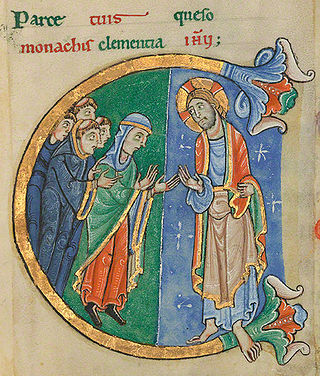
Christina of Markyate was born with the name Theodora in Huntingdon, England, about 1096–1098 and died about 1155. She was an anchoress, who came from a wealthy English family trying to accommodate with the Normans at that time. She later became the prioress of a community of nuns.
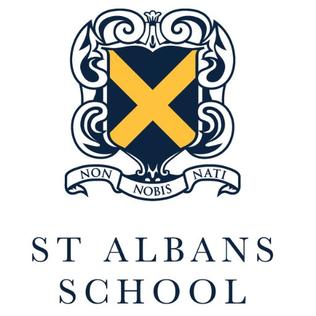
St Albans School is a public school in the city of St Albans in Hertfordshire. Pre-sixth form admission is restricted to boys, but the sixth form has been co-educational since 1991. Founded in 948 by Wulsin, St Albans School is the oldest school in Hertfordshire and one of the oldest schools in the world, being located on a 500 acre site. The school is known for its academic prowess, achieving excellent results and gaining several places at the top universities, specifically Oxbridge. The school now has state-of-the-art science facilities unlike any other school in the country, also having educated a multitude of scientists, a few examples being Stephen Hawking, who dedicated some of his success to the school and Ian Grant. The school created The Stephen Hawking Society as part of a tribute to the former pupil. As part of this, many famous scientists such as the 2001 Nobel Prize winner, Dr Tim Hunt, have given lectures at the school.
Sopwell Priory was a Benedictine nunnery founded around 1140 on the site of an ancient hermitage in Sopwell, Hertfordshire, England. After the Dissolution, the priory was torn down and a Tudor manor house constructed in its place.
Sir Richard Lee (1513–1575) was a military engineer in the service of Henry VIII of England, Edward VI and Elizabeth I. He was a commander of Henry VIII and appointed surveyor of the King's works. Lee was member of parliament for Hertfordshire in 1545. He was the first English engineer to be knighted.
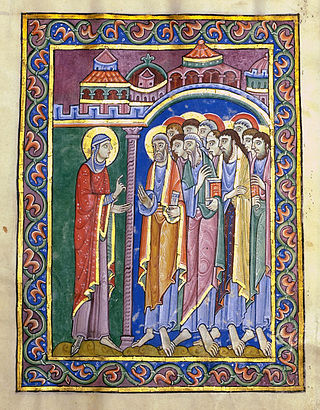
The St Albans Psalter, also known as the Albani Psalter or the Psalter of Christina of Markyate, is an English illuminated manuscript, one of several psalters known to have been created at or for St Albans Abbey in the 12th century. It is widely considered to be one of the most important examples of English Romanesque book production; it is of almost unprecedented lavishness of decoration, with over forty full-page miniatures, and contains a number of iconographic innovations that would endure throughout the Middle Ages. It also contains the earliest surviving example of French literature, the Chanson de St Alexis or Vie de St Alexis, and it was probably commissioned by an identifiable man and owned by an identifiable woman. Since the early 19th century it has been owned by the church of St. Godehard in Hildesheim, Lower Saxony in northwestern Germany, but is now stored and administered at the nearby Dombibliothek in Hildesheim Cathedral. A single leaf from the manuscript is at the Schnütgen Museum, Cologne; one further leaf, and one further cutting, are missing from the volume, their whereabouts unknown.
Events from the 1140s in England.
Richard de Morins, also known as Richard of Mores, Richard de Mores, Ricardus de Mores, and Ricardus Anglicus was an English Augustinian canon of Merton Priory, before becoming prior at Dunstable Priory in 1202.
This is a list of abbots of St Albans Abbey up to its Dissolution in 1539.
- Willegod (793–796)
- Eadric
- Wulsig
- Wulnoth (Walworth)
- Eadfrith
- Wulsin
- Aelfric
- Ealdred
- Eadmer
- Leofric
- Ælfric of Abingdon
- Leofstan
- Frithric (Frederic)
- Paul of Caen (1077–1093)
- Richard d'Aubeney (1097–1119)
- Geoffrey of Dunstable (1119–1146)
- Ralph Gubion (1146–1151)
- Robert de Gorron (1151–1166)
- Symon (1167–1183)
- Warin (1183–1195)
- John de Cella (1195–1214)
- William of Trumpington (1214–1235)
- John of Hertford (1235–1263)
- Roger de Norton (1263–1291)
- John of Berkhamsted (1291-1302)
- John de Maryns (1302–1308)
- Hugh of Eversden (1308–1327)
- Richard of Wallingford (1326–1335)
- Michael of Mentmore (1335–1349)
- Thomas de la Mare (1349–1396)
- John de la Moote (1396–1401)
- William Heyworth (1401–1420)
- John of Wheathampstead (1420–1440)
- John Stoke (1440–1451)
- John of Wheathampstead (1451–1465)
- William Albon (1465–1475)
- William of Wallingford (1476–1492)
- Thomas Ramryge (1492–1520)
- Thomas Wolsey (1521-1529/1530), Commendatory abbot
- Robert Catton (1529–1538)
- Richard Boreman alias Stevenage (1538–1539), last abbot
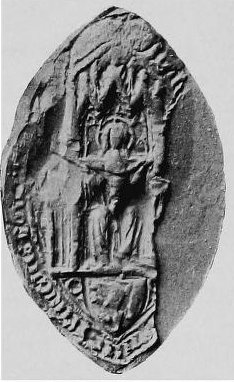
Markyate Priory was a Benedictine priory in Bedfordshire, England. It was established in 1145 and disestablished in 1537.

Ralph Gubion was a native Englishman and abbot of St Albans Abbey from 1146 to 1151.
William d'Aubigny, sometimes William de Albini, was an Anglo-French baron and administrator who served successive kings of England and acquired large estates in Norfolk. From his title of Butler to King Henry I of England, he was called William d'Aubigny Pincerna to distinguish him from other men of the same name.

The Church of St Nicholas in Norton in Hertfordshire is the parish church for what was originally the village of Norton but which today has become a suburb of Letchworth Garden City. The present building dates from about 1109 to 1119, with additions in the 15th century including the tower. Before the Reformation it was a stopping point on the pilgrim route to the Abbey of St Albans and the shrine there.

